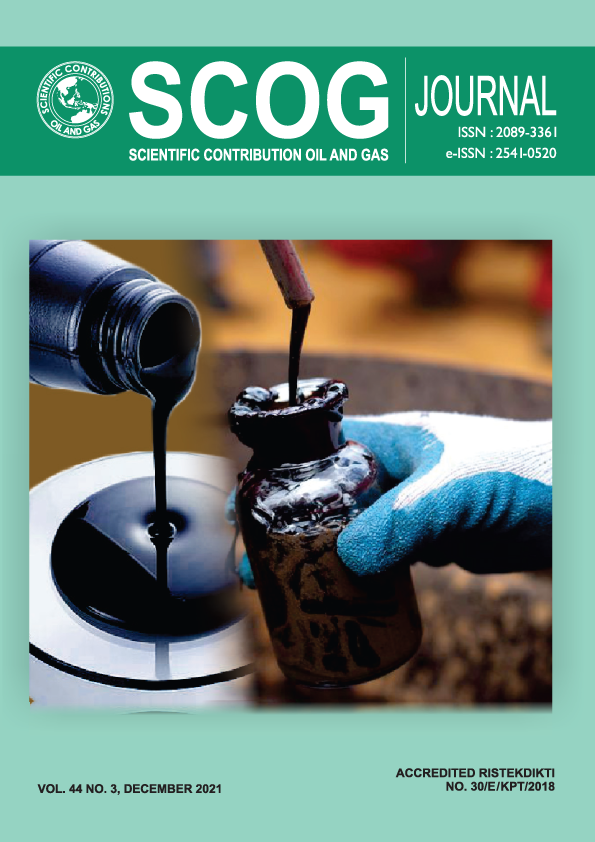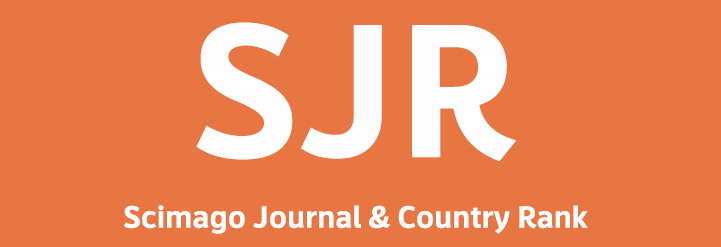Heavy Oil Seapage Characteristic in Cipari Area, Banyumas Central Java
DOI:
https://doi.org/10.29017/SCOG.44.3.709Keywords:
Oil Seep Cipari, Banyumas Sub-basin, Heavy Oil.Abstract
Oil seepage in Cipari, Banyumas, Central Java, has long been known. Although, Its occurrence had been reported in several publications, it's properties and characteristic, have not been explained in detail. Therefore, through field geology observation and laboratory analysis, this paper attempts to describe the oil seep characteristic, possible source rock origin, and its relationship with geological features in the surrounding area. Picnometer analysis resulted that this oil seep can be classified as heavy oil with 12n API Gravity. Gas Chromatography (GC) & Gas Chromatography Mass Spectometry (GCMS) analysis revealed that Cipari oil seep is heavily biodegraded. Possible source rock of the oil seep was interpreted based on bicadinane and oleanane biomarkers, which indicated that source was deposited in fluvio-deltaic/transitional environment. Based on regional geology reference of Banyumas sub-Basin, it is inferred that the source rocks possibly shale or claystone of Paleogene sediment which was thermally mature, and deposited in transition to marine environment. Deep seated fault that extent from Majenang to Karangbolong areas is probably the main migration pathway of the oil seepage from the kitchen or deep reservoir to the surface. The Cipari anticline outcrop, which associated with faults and fractures, become the place where the oil seep occurs in the surface. Heavy biodegradation of the oil seep may possibly be accelerated by hydrothermal system during migration from the reservoir/kitchen area to the surface.References
Armandita, C., Mukti, M. M. & Satyana, A. H., 2009. Intra-arc trans-tension duplex of Majalengka to Banyumas area : Prolific Petroleum Seeps And Opportunities In West-Central Java Border. Jakarta, Indonesian Petroleum Association (IPA).
Bolliger, W. & De Ruiter, P. A. C., 1975. Geology of The South Central Java Offshore Area. Jakarta, Indonesian Petroleum Association (IPA), pp. 67-81.
Chaillan, F., Le Fleche, A., Burry, E., Phantavong, Y-h., Grimont, P., Sailot,A., & Oudot,J., 2004. Identification and biodegradation potential of tropical aerobic hydrocarbon-degrading microorganisms. Research in Microbiology, 155(7), pp. 587-595.
Hadimuljono, J. S. & Firdaus, N., 2021. Determination of Biodegradation Zone in Central Sumatra Basin. Scientific Contributions Oil and Gas (SCOG), 44(1), pp. 55-63.
Head, I. M., Jones, D. M. & Larter, S. R., 2003. Biological activity in the deep subsurface and the origin of heavy oil. Nature, Volume 426, pp. 344-352.
Huang, W.-Y. & Meinschein, W. G., 1979. Sterols as ecological indicators. Geochimica et Cosmochimica Acta, 43(5), pp. 739-745.
KIGAM-LEMIGAS, 2011. Hydrocarbon Potential Review of South Central Java Basin, Indonesia (un- published), Jakarta: KIGAM-Lemigas.
LEMIGAS, 2010. Kajian Pengembangan Sumber Daya Migas Di Cekungan Indonesia Barat (Unpublished), Jakarta: Lemigas.
LEMIGAS, 2020. Kajian Potensi Minyak Berat (Oil Sands) dan Bitumen di Cekungan Sumatera Tengah (Study on Heavy Oil Potential of Central Sumatra Basin) - Final Report (Unpublished), Jakarta: Lemigas.
Link, W. K., 1952. Significance of Oil and Gas Seeps In World Oil Exploration. AAPG Bulletin, 36(8), pp. 1505-1540.
Lunt, P., Burgon, G. & Baky, A., 2009. The Pemali Formation of Central Java and equivalents: Indicators of sedimentation on an active plate margin. Journal of Asian Earth Sciences, 34(1), pp. 100-113.
Meyer, R. F., Attanasi, E. D. & Freeman, P. A., 2007. Heavy Oil and Natural Bitumen Resources in Geological Basins of the World, Reston, Virginia: USGS Open File- Report.
Mulhadiyono, 1973. Petroleum Possibilities of The Banyumas Area. Jakarta, Indonesian Petroleum Association (IPA).
Pannekens, M., Kroll, L., Muller, H., Mbow,ET., & Meckenstock, R.U., 2019. Oil reservoirs an exceptional habitat for microorganisms. New Biotechnology, Volume 49, pp. 1-9.
Peters, K. E. & Moldowan, J. M., 2005. The Biomarker Guide, Interpreting Molecular Fossils in Petroleum and Ancient Sediments. United States: Prentice-Hall.
Purwasatriya, E. B., Surjono, S. S. & Amijaya, D. H., 2018. Oligocene-Pleistocene Paleogeography Within Banyumas Basin and Implication to Petroleum Potential. Yogyakarta, UGM.
Purwasatriya, E. B. & Waluyo, G., 2012. Studi Potensi Minyak Dangkal dengan Pendekatan Metode Statistik Berdasar Data Geologi Permukaan Di Cekungan Banyumas. Jurnal llmiah Dinamika Rekayasa, 8(2), pp. 48-52.
Rizal, Y., Santoso, W.D., Rudyawan, A., Tampubolon, R.A., & Nurfarhan, A.A., 2018. Sedimentary Facies and Hydrocarbon Reservoir Potential of Sand Flat In The Upper Part of Tapak Formation in Banyumas Area, Central Java. Jurnal RISET Geologi dan Pertambangan, 28(2), pp. 251-263.
Said, S., Jatmiko, T. & Widada, S., 2020. Potensi Batuan Induk Hidrokarbon Satuan Batulempung Formasi Rambatan Daerah Wangon Sub-Cekungan Banyumas. Jurnal Offshore, 4(1), pp. 9-16.
Santoso, B., Zeiza, A. D. & Nugroho, F. P., 2007. Neogene Tectonic And Sedimentary Control To Hydrocarbon Generation In Banyumas Sub-Basin, South of Central Java. Jakarta, Indonesian Petroleum Association (IPA).
Satyana, A. H., 2005. Oligo-Miocene Carbonates of Java, Indonesia: Tectonic-Volcanic Setting And Petroleum Implications. Jakarta, Indonesian Petroleum Association (IPA).
Downloads
Published
Issue
Section
License
Copyright (c) 2022 SCIENTIFIC CONTRIBUTIONS OIL AND GAS (SCOG)

This work is licensed under a Creative Commons Attribution 4.0 International License.
Authors are free to Share — copy and redistribute the material in any medium or format for any purpose, even commercially Adapt — remix, transform, and build upon the material for any purpose, even commercially.
The licensor cannot revoke these freedoms as long as you follow the license terms, under the following terms Attribution — You must give appropriate credit , provide a link to the license, and indicate if changes were made . You may do so in any reasonable manner, but not in any way that suggests the licensor endorses you or your use.
No additional restrictions — You may not apply legal terms or technological measures that legally restrict others from doing anything the license permits.














